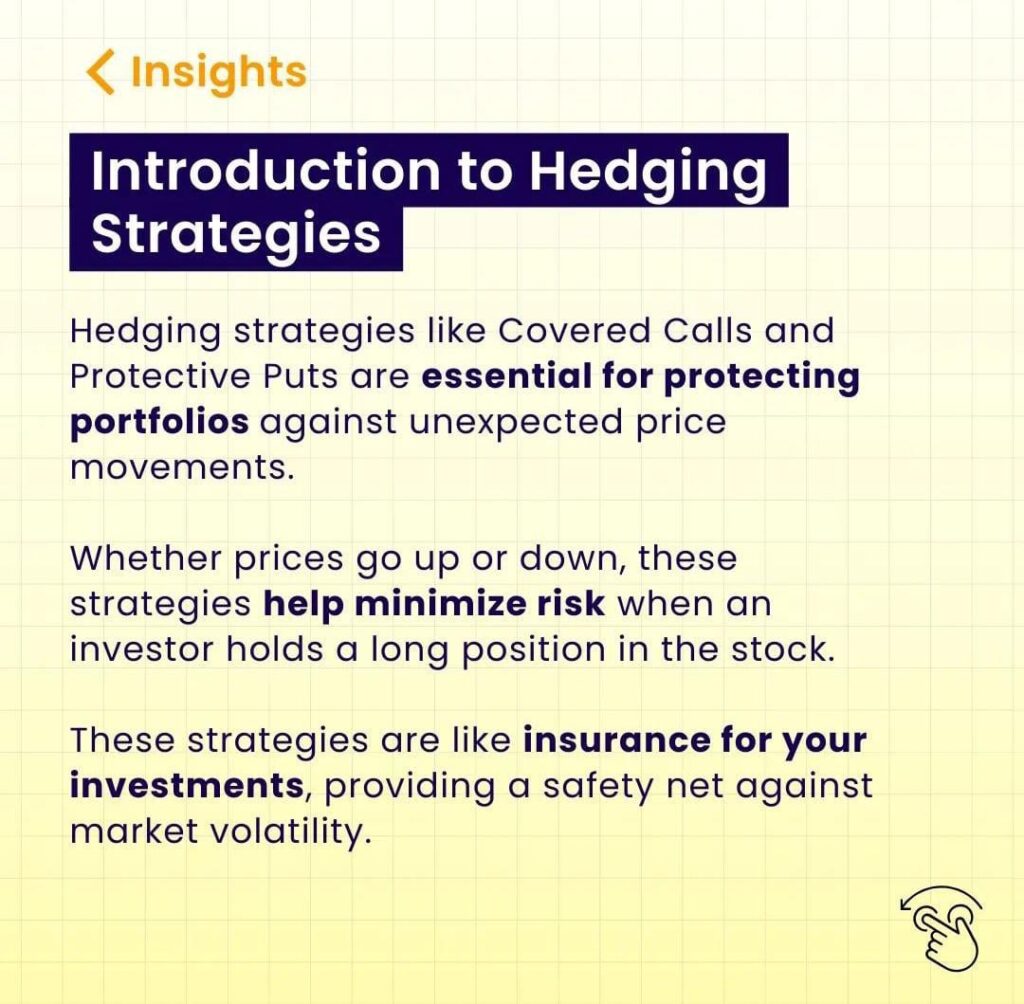Introduction
Hedging is an essential concept in trading and investing, offering protection against market volatility and potential losses. While every trade involves some degree of risk, hedging strategies allow investors to manage these risks more effectively. In this blog, we’ll explore what a hedging strategy is, why it’s important, and how it can be implemented to safeguard investments.
What is a Hedging Strategy?
A hedging strategy involves making an investment to reduce or offset the risk of adverse price movements in an asset. It’s like taking out insurance to protect against unexpected losses. Hedging doesn’t prevent loss entirely, but it can minimize the impact, providing a safety net in uncertain market conditions. Traders and investors use hedging techniques to secure their portfolios from sudden market changes, which could otherwise lead to significant losses.
What Are Some Reasons for Hedging?
The main reason for hedging is to manage risk. Investors hedge for various reasons, including:
- Protection from market volatility: Hedging helps investors shield their positions from unpredictable price movements.
- Locking in profits: A hedge can preserve gains by offsetting potential future losses.
- Managing currency risk: Businesses with international operations hedge to protect against adverse currency exchange rate movements.
- Reducing exposure to commodity price fluctuations: Companies that rely on raw materials hedge to stabilize the cost of supplies.

How Do You Value a Hedge in Trading?
Valuing a hedge in trading involves calculating the cost and benefit of implementing the strategy. A well-structured hedge minimizes the downside while maintaining the potential for upside gains. To value a hedge, investors consider:
- Premiums paid for options or forward contracts: The cost of hedging is factored in based on the type of instrument used.
- The effectiveness of the hedge: This is assessed by measuring how much risk has been mitigated against adverse movements.
- Hedge ratios: These ratios help determine the proportion of exposure to be hedged, ensuring the strategy aligns with the overall portfolio risk.
Top Misconceptions About the FRM Exam
What Are the Types of Hedging Strategies?
- One-Off Forward Contracts A one-off forward contract is an agreement between two parties to buy or sell an asset at a predetermined price on a specific future date. It’s commonly used in currency and commodity markets to lock in current prices and reduce exposure to future price fluctuations.
- Open Forward Contract Unlike a one-off forward contract, an open forward contract allows more flexibility in setting the transaction date. It is typically used by businesses that want the ability to settle their hedge at any point within a specified period.
- Rolling Hedge A rolling hedge involves extending or “rolling” a hedge as it approaches its expiry date. This is useful for businesses that need ongoing risk management beyond the term of a single contract.
- Layered Hedge A layered hedge involves spreading out hedging transactions over time. Instead of hedging the entire risk at once, investors gradually implement the hedge in layers, allowing them to take advantage of market movements over time.

How to Implement Hedging Strategies
To implement hedging strategies, investors need to:
- Assess their risk exposure: Understanding the specific risk they want to hedge against is critical.
- Select the right financial instruments: This could include options, forward contracts, or futures, depending on the type of risk.
- Determine the hedge ratio: This involves deciding what percentage of their exposure they want to hedge.
- Monitor and adjust the hedge: Since market conditions change, regular adjustments may be needed to keep the hedge effective.
Example of a Forward Hedge
Let’s say a U.S. company expects to receive €1 million in six months. To hedge against potential euro depreciation, it enters into a forward contract to sell the €1 million at the current exchange rate. If the euro’s value decreases by the time the payment is received, the company is protected, as it has already locked in a favorable exchange rate.
How Is Delta Used in Hedging Options Trades?
In options trading, delta represents the sensitivity of an option’s price to changes in the underlying asset’s price. Delta hedging involves adjusting the position in the underlying asset or other options to maintain a neutral delta, minimizing risk. For example, if an investor holds a call option with a delta of 0.5, they might buy 50 shares of the underlying asset for every call option to create a delta-neutral position.
Key Takeaways
- Hedging strategies are used to protect against adverse market movements and manage risk.
- Common hedging methods include forward contracts, rolling hedges, and layered hedges.
- Proper valuation of a hedge considers the cost, effectiveness, and hedge ratio.
- Delta hedging is a key concept in managing options trades.

FAQs
Does Hedging Work in All Markets?
Hedging can be applied in most financial markets, including commodities, currencies, equities, and interest rates. However, the effectiveness of a hedge depends on market conditions, the financial instrument used, and the specific risks involved.
Can Hedging Make You Money?
Hedging is designed to manage risk rather than generate profit. While it reduces potential losses, it also limits potential gains. That said, a well-implemented hedge can provide long-term financial stability, allowing investors to focus on their core strategies.
What Investments Are Used to Hedge?
Common investments used for hedging include:
- Options: Call and put options are popular tools for hedging stock positions.
- Futures and forwards: These contracts are used to lock in prices for commodities, currencies, or financial instruments.
- Swaps: Interest rate swaps and currency swaps are used to manage changes in rates or currency values.
- Exchange-traded funds (ETFs): Certain ETFs allow investors to hedge against specific market sectors or risks.

INSTAGRAM : https://www.instagram.com/fintelligents/
FACEBOOK : https://www.facebook.com/fintelligents

